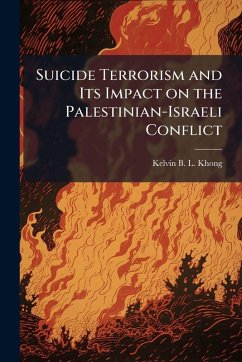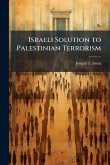Suicide terrorism was introduced to the Palestinian-Israeli conflict in 1994 by the Palestinian militant organization Hamas. There was an average of 4 to 5 suicide attacks per year over the next few years until an exponential increase in 2001 led to a peak of 44 suicide attacks against Israeli targets in 2002. Although the number of suicide attacks has come down since then, the effects of suicide terrorism on the Palestinian-Israeli conflict have lingered, if not intensified. Israeli security measures imposed to curb suicide terrorism have been arguably successful and can be credited for the decline in suicide attacks since 2002. The motivation for Palestinian terror organizations to carry out suicide terrorism against Israel has, however, remained high. This is linked to the increase in support from the Palestinian public for violence against Israel as Palestinian perception of Israeli high-handedness in responding to suicide attacks led many to lose hope in the peace process. Suicide terrorism has undermined the position of nationalist Palestinian groups actively seeking a peaceful settlement with Israel. At the same time, it has weakened international sympathy for the plight of the Palestinian people and given Israel legitimacy for some kind of violent response. Rejectionist Palestinian militant groups have successfully used suicide terrorism to prevent a peaceful resolution to the Palestinian-Israeli conflict. This work has been selected by scholars as being culturally important, and is part of the knowledge base of civilization as we know it. This work was reproduced from the original artifact, and remains as true to the original work as possible. Therefore, you will see the original copyright references, library stamps (as most of these works have been housed in our most important libraries around the world), and other notations in the work. This work is in the public domain in the United States of America, and possibly other nations. Within the United States, you may freely copy and distribute this work, as no entity (individual or corporate) has a copyright on the body of the work. As a reproduction of a historical artifact, this work may contain missing or blurred pages, poor pictures, errant marks, etc. Scholars believe, and we concur, that this work is important enough to be preserved, reproduced, and made generally available to the public. We appreciate your support of the preservation process, and thank you for being an important part of keeping this knowledge alive and relevant.
Bitte wählen Sie Ihr Anliegen aus.
Rechnungen
Retourenschein anfordern
Bestellstatus
Storno








